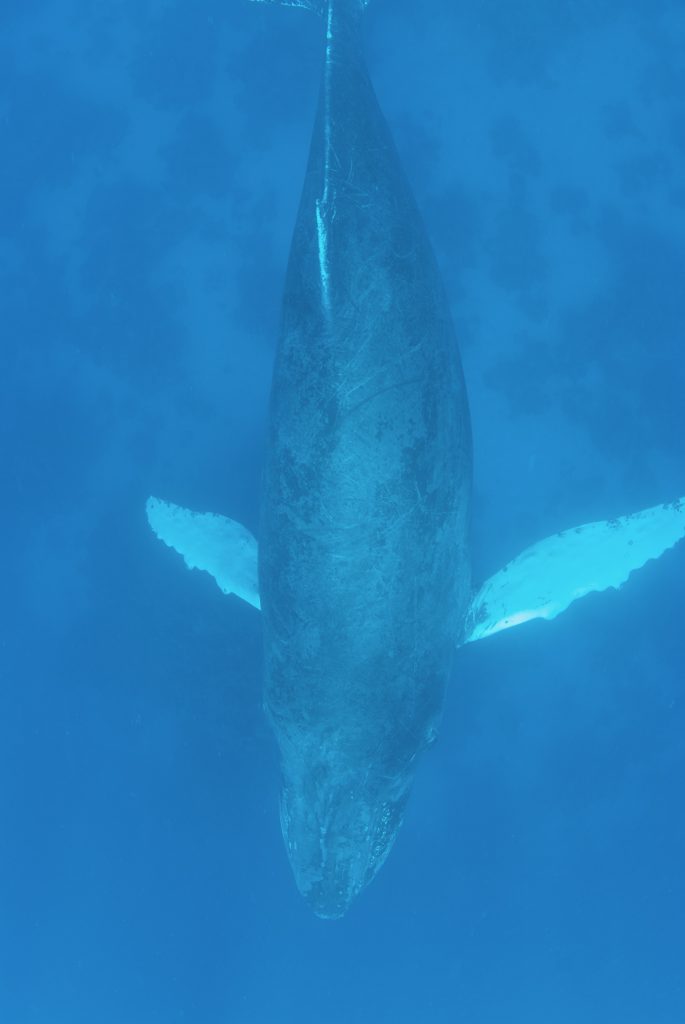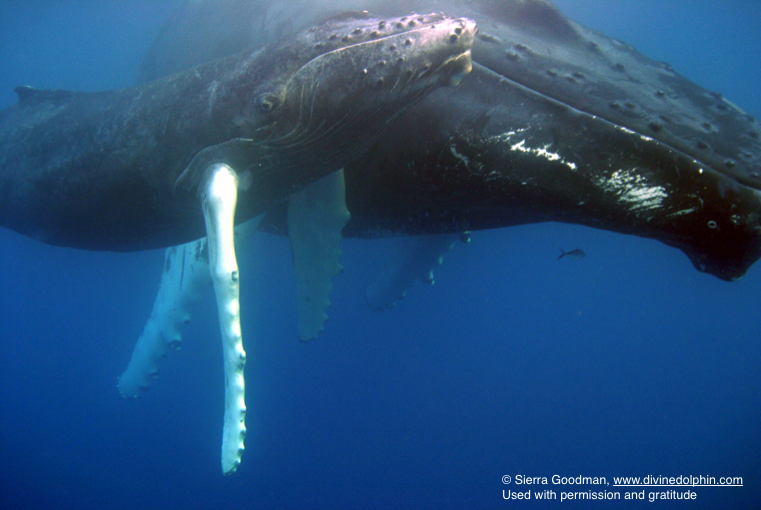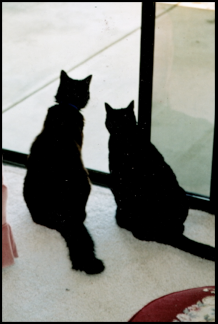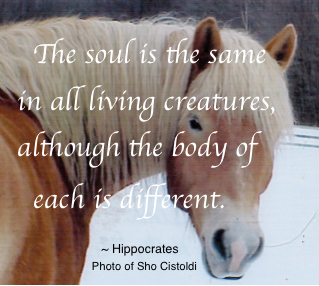Humpback whales are singers, composers and poets whose songs travel across entire oceans. Whales sing in an emotional language, older than speech, that deeply resonates with us.
Roger Payne, A life among whales
For me, hearing the song of a humpback whale is to hear the sound that connects all souls. When in the presence of singing whales the world somehow feels aligned. All is right, all is well. I feel God when I am with the whales. And when I am blessed to hear them sing while also in their physical presence, well, I then not only feel God’s presence—it is as if God fills me. The vibration of the songs of humpback whales overflows to everyone and everything around them.
Fifty weeks a year, the weeks that I think of as life between the time to be with the whales, I wait to once again see the North Atlantic Humpbacks I love so much in their Silver Bank mating grounds off the Dominican Republic. I listen to recordings of their songs all year, but hearing them live—oh to hear those ancient sounds, those holy sounds, the beautiful, piercing, haunting songs of the humpback whales— brings me immeasurable peace and joy.
When on whale watching or on whale swim trips, one never knows what will happen or when. Encounters are not predictable and certainly not scheduled. We are on the whales’ time, in their home. What happens happens. When we are approached by a whale or whales, it is always a great blessing. Sometimes, what begins as a quiet, not very dramatic moment can turn into a blissful life altering experience. Such moments can’t be planned.
One afternoon while on a tender (small boat) looking for whales in Silver Bank, our captain got in the water with a mother and calf who approached our boat. As soon as she entered the water, however, the whales swam off. The captain reentered the tender and told us that these whales did not seem likely to return to us. Because we do not chase whales, our boat did not attempt to follow them. Our captain did say, however, that she heard singing in the water. Since we had not yet been in the water that afternoon I asked if we could get in to hear the singing. She agreed but said the singing was barely audible. Regardless, a few of us got in.
She was right, the singing could barely be heard. It seemed very far away. I had to hold my breath to hear it because as anyone who snorkels knows, the sound of your own breathing through one’s snorkel makes a bit of noise itself. It was still heavenly to me–however far away the sound, however long I held my breath–just to hear their far away singing. I closed my eyes, gave thanks to the singing whale and told him or her (please see Note at end of article: Thoughts and Observations on the Claim that Only Male Humpbacks Sing) how grateful we all were to be visiting the whales in their home and to hear this song.
After a few minutes the singing became a bit easier to hear. It was subtle but I no longer had to strain or hold my breath to hear. Then suddenly the singing became clear as a bell and much louder. I opened my eyes. Even knowing how very far their sound carries, just in case this singer was close by I surely didn’t want to miss seeing the whale! The water was maybe 30 feet deep and a clear, gorgeous aqua blue. The song was filling me by then, taking me to a calmer place, a more peaceful place within. As the volume continued to increase slowly but steadily, it became clear that not one but two whales were singing! Then almost out of nowhere, without any warning, a mother and calf were directly beneath us, both singing! I went from quiet bliss to freaked out thrilled in a nano second! Oh! Oh! Oh! they were right there under us, singing! Looking at them while listening to their singing was beyond blissful.
“Thank you, thank you, thank you for letting us see you and to hear your singing. We love you!” I said over and over.
“We know you all love us,” the mother said. “We’re singing to you and about you [she was referring to all of us present, not just me]. I want my baby to know about humans who love us and appreciate us, to learn to detect the vibrations of those to trust. I came to show her all of this with you. Thank you. We will not stay, buy I am grateful for this opportunity.”
And they were gone, as quickly as they came. But their singing continued, filling the ocean and our hearts with love.
I’ve heard the song of a humpback whale live many, many times, but never a mother and calf both singing, and never with them traveling less than ten feet under us while we were in the water. The unexpected blessing of this was overwhelming. Afterwards, back on the tender we all acted like a bunch of little kids crying and laughing and hugging and squealing about the wonder of it all. We were all somehow marked by these whales and their songs. I will never forget it. I can still see that mother and baby beneath us, remembering how the vibration of their beautiful, thunderous singing moved right through my body as they intentionally swam so closely beneath us. Looking at them while listening to their singing was an otherworldly, blissful experience.
As if that was not enough euphoria from singing whales for one trip, on the last day, the morning we begin cruising back to land and leaving Silver Bank, I got up especially early to meditate and to thank the whales for an incredible week of close encounters with them. As I got up to leave the deck, one of the guests, Eva–a truly lovely person and photographer from Sweden–saw me with my dear friend Elise and motioned for us to follow her to the bow of the boat. There, her hydrophone was in the water and she invited us put on the headphones. I was astonished when I listened. I could hardly believe it–from below the completely calm ocean surface with not a white cap nor whale to be seen, came the magnificent sound of not just one song of a humpback whale, but what sounded like a full symphony orchestra of hundreds and hundreds of singing whales. I had never heard anything like it. Such beautiful, haunting, ancient sounds of our cetacean sisters and brothers singing. Tears streamed down my face. I was looking out at a smooth as glass blue sea, not a whale to be seen, but hearing them as clearly as if I were under the water with them. It was like like entering a magic portal to another world, the whales’ world–where though we could not see them, they were there, singing, singing, singing their hearts out.

This dichotomy of seeing no whales on the surface of the sea for miles but hearing hundreds of them under that same sea, reminded me that just as we are not always aware of all that’s occurring in the world beneath the sea, there is also so much we are not aware of going on above the sky in the heavens. Just as the whales sing beneath the surface, so do the spirits of whales and other loved ones, guides and teachers sing for us and guide us from the heavens. For the glimpses and support we get from both, I am immensely grateful.
There are boundaries between us, little calf, but our songs meet. Whenever we listen we will hear each other, the soft harmony of two different singers looking at each other through clear water.
~ Spoken by a whale to a young human girl in the novel
Whale Singer by Wilton Katz

Listen to recordings of humpback whale songs from Silver Bank: http://www.nordarc.se/whalesongs/Sound_recording.html
The above link will take you one of the recordings made by Eva Johnson, of Nordarc Architecture and Photography in Sweden. She is creating a photography exhibit to honor whales called Beneath the Sea. To view her gorgeous photography visit www.nordarc.se. Eva is one of the most delightful people I have ever met on all of my whale trips–and her love for the whales shines through in her work.
Learn more about whale songs from two greatly admired researchers of whales:
Roger Payne, Ocean Alliance http://www.oceanalliance.org/rogerPayne.html–who discovered that the sounds of humpback whales actually are songs. Be sure to read his book Among Whales and view his DVD A Life Among Whales
Chris Clark, Director of the Bioacoustics Research Program at Cornell University, is well known for his research on the sounds of whales and the impact of noise pollution in the oceans on the lives of whales. I was mesmerized listening to him speak from his heart at an American Cetacean Society conference. You can listen to him yourself on this YouTube video describing his excitement at the unexpected recording of a Blue Whale off New York. http://www.youtube.com/watch?v=2aUs5R9qOpM
Learn more about what whales say themselves about their lives and their views of humans:
Conversations With Whales
http://www.animalsinourhearts.com/workshops-events/descriptions/wisdom-from-the-whales.html
To swim with humpback whales:
In Silver Bank off the Dominican Republic, contact Tom Conlin, owner of Aquatic Adventures--the Operator who pioneered these experiences.
In Cost Rica, contact Sierra Goodman, owner of Divine Dolphin, who has been bringing humans to the whales and dolphins for many years.
Article: To Hear the Song of a Humpback Whale
https://www.animalsoulsmatter.com/2019/11/03/to-hear-the-song-of-a-humpback-whale/

NOTE: Thoughts and Observations on the Claim that Only Male Humpbacks Sing
An interesting issue about humpback whale singers is that all of the professional and lay literature on this subject that I’ve read states that only male humpbacks sing. For years, as I sought and absorbed as much information as I could about these whales, I believed it was a fact that “only males sing” because that is what researchers said in their books and articles.
However, when I heard my first humpback singer while in the water with this whale in Silver Bank, we could clearly see the genital slit with the grapefruit sized lobe on the underbelly of the singing whale–a clear indication that this singing whale was a female.
When I returned home I scoured all the books and articles I kept and bookmarked web sites regarding this issue. As I remembered, they all stated that “only males sing” and that the song is about sex, about attracting a mate, or competing with other males for a mate, etc.
I also re-read in the literature that the only way to tell with certainty whether a humpback is a male or female is to view their genital slit area. This can only be seen if either a whale at the surface rolls over on its back (and whales do not sing at the surface so singers cannot be sexed by humans standing on a boat), or, if the human checking for gender is in the water with the whale who is singing and can see this genital slit area. I have read nothing, however, absolutely nothing in any of the literature and research in which there are claims that ‘only males sing” about researchers being in the water with the singers making attempts to determine the gender of singers by viewing genital slit areas. In fact, many of the researchers who claim that only male humpbacks sing also tend to be opposed to humans ever getting in the water with whales.
To reiterate: The researchers who claim that only male humpbacks sing were NOT in the water with singers with the whales. Therefore, they had no proof whatsoever that the singers are males.
So the decades long assumption that “only males sing” is unfortunately just that–an assumption passed on as fact. The theory that the singing may be mating related is at least logic based because so many of the singers have been heard and recorded in mating grounds. But the assumption stated as fact that only males sing is not rooted in any facts. Perhaps a root of this assumption may be a sexist filter of the researchers–who when this myth was started were men. Whatever the root of the assumption, it remains an assumption, not a fact.
In the intuitive healing arts and in the counseling profession—my own professional realm–we are trained in the ethic of clearing ourselves of any assumptions, preconceived ideas or personal biases before communicating with animals and while counseling clients. Because of this, despite my very deep respect for researchers of whales and my gratitude for access to learn from their body of work, it’s always puzzled me that researchers who deal in facts and seem to value only what is physically verifiable would make such a claim that “only males sing” based only on a guess or perhaps a sexist bias.
It may only be when researchers expand their work to hypotheses that whales have motivations beyond biology and survival that we will see even more comprehensive research on the behavior and life of whales. Or at the very least, they may want to enter the water with singing whales to identify their gender instead of continuing to call their assumption that only male humpbacks sing a fact.



 Thank you for visiting my blog. It is a place for me to share stories from and about animals, love, loss and healing. The articles are primarily written by me, but some are from my colleagues who have graciously allowed me to share their words here.
Thank you for visiting my blog. It is a place for me to share stories from and about animals, love, loss and healing. The articles are primarily written by me, but some are from my colleagues who have graciously allowed me to share their words here. 


